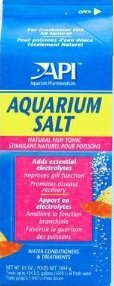A white, milky film on an angelfish and other tropical fishes fins and tails is evidence of fin rot on tropical fish. The fins may appear ragged or perhaps with holes. It starts on the fin edges and can progress until it eats the fins away and into the body which eventually leads to death.
Hans Baensch states in Aquarium Atlas Volume 1, fin rot is highly contagious. For that reason it is recommended to treat the entire tank. Fin rot is an aggressive disease that is easier to cure in the earlier stages.
What Causes Fin Rot?
Several fungus and bacteria present in all aquariums cause angelfish fin rot. Under ideal tank conditions these do not cause a problem and angelfish and other tropical fish can live with them without problems unless injured or stressed. It’s when tank conditions become less than ideal that fin rot can take hold.
Conditions that will increase the risk for fin rot in angelfish include:
- High ph – Angelfish naturally live in a low pH slightly acidic water.
- Water too cold – Angelfish prefer water at about 82 degrees.
- Damaged fins or tail – This may be from a scrape against a rock or something in the tank, or from being nipped by other fish such as a tiger barb. These injuries allow the disease to flourish.
- Poor water quality
Water Condition and Quality
Water quality can become a problem and poor water may cause angelfish fin rot. An overpopulated aquarium or overfeeding will produce poor water quality if water changes aren’t frequent enough.
A temperature range of 77 to 83 is good for a tropical tank, and angelfish prefer the upper end.
The first thing to do if an angelfish develops a film on its fins is to do a 50 percent water change to include cleaning the gravel of waste food and other debris. This will help bring the water into the safe range. It won’t cure the disease, but may help prevent spread to other tank mates. The fresh water should be the same temperature as the tank temperature. Especially severe cases may require a complete aquarium cleaning. After the change, it is a good idea to check the water quality for pH, nitrates and nitrites.
How to Treat Fin Rot
Curing fin rot is possible, especially if the problem is noticed early. If only one fish has the disease it may be advisable to move the infected fish for treatment in a quarantine tank to treat if fin rot isn’t visible on other fish. A quarantine tank is good as some medicines harm live plants. However, if one fish in a tank has the disease it’s likely others are infected. Several options to treat can be successful. Be sure to follow the instructions for each product.
The cures may recommend increasing the temperature in conjunction with the medicine. This results in reducing the oxygen, and additional airstones should be added to increase oxygen supply.
One remedy that can’t be recommended is cutting off the fin rot. This would be surgically removing the rot and not harming the fin. Only a veterinarian should attempt this procedure.
Antibiotics and Antifungals for Fin Rot
These antibiotics are formulated to treat a range of bacterial and fungal infections other than fin rot. Some of these will kill the good bacteria your fish need to survive and require the aquarium to be recycled. Some of these require removing the charcoal filter as the filter may remove the medicine. The manufacturer may require frequent or daily water changes. Some will color the water. As with all medicine read and follow directions.
Fungus Clear
Jungle Fungus Clear tablets is an antibiotic and antifungal that cures fin rot. Fungus Clear doesn’t require raising the water temperature. Use for 8 to 10 days maximum.
Furan-2 will cure a wide variety of bacteria diseases, including fin rot. Will kill plants.
Maracyn one and two are commonly used treatments for fin rot. Some users recommending both simultaneously to cover a broader range of bacteria including beneficial bacteria.
Aquarium salt is a common and useful addition to the tank to cure fish diseases. Aquarium salt addition is generally accompanied by slowly raising the tank temperature to 85 degrees. Salt will help produce the protective slime coating on angel and other tropical fish. Use a non-Iodized salt as Iodine can kill fish.
Quarantine the infected fish and add 1 teaspoon of salt per gallon for mild cases. Use 2 to 2.5 teaspoons for more advanced cases. Do daily water changes and add salt to the replacement water. Dissolve the salt in water and add over an hour. Do this for a maximum of 10 days.
Salt can be used with other treatments. It can be used alone with a mild or early case of fin rot.
Using a quarantine tank is best as salt can kill plants and scaleless catfish such as cordydoras and pictus. Tetras are also somewhat sensitive to salt.
Click here for more on how to use aquarium salt to treat angelfish diseases.





 Aquarium Salt
Aquarium Salt